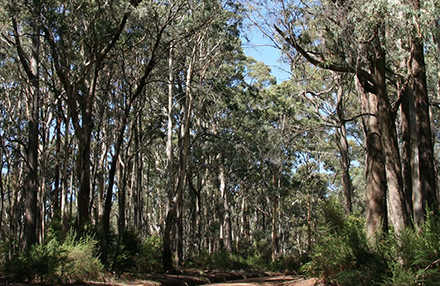
VEAC’s estimate of $270 million in economic value driven by forest protection in Victoria’s Central West is a mathematical fantasy that ignores real money from a functioning timber industry, according to a regional-based forestry group. The South East Timber Association (SETA) said in the cost-benefit analysis of VEAC’s final report, the consultants conservatively estimated a net benefit to the Victorian economy of $247 million present value over 30 years. Source: Philip Hopkins for Timberbiz
SETA, based in south-east New South Wales, has several forestry scientists in its membership, and supports small communities in forested areas.
“The gross benefit ($270 million) accrues from the improved protection of native vegetation as a result of the (VEAC) recommendations,” SETA said. The forests had economic values that contribute to the welfare of society and give individuals satisfaction, VEAC said – values such as catchment water regulation, preservation of natural ecosystems, threatened species and special areas.
“For those who think this will be a real economic benefit to the region, think again. Given past gross underestimates of the financial impacts of the VEAC lockups, assume the cost impacts are conservative,” SETA said.
VEAC estimated the economic cost at $2,157,655, with the main cost the loss of commercial timber and firewood. With the assumed loss over 30 years and a 7 per cent discount rate, the result was a present-day negative cost of $22,466,939.
“This then allows an intellectual fantasy to run, so that everyone directly impacted by the VEAC lockups might actually believe they will be financially better off,” SETA said. “How do you calculate the $270 million of net present benefits, which is the warm and fuzzy feeling people get when they think they are saving the environment?”
SETA said VEAC explained the rational in the following way.
“Community values are public good values. They are the sum of the WTP (willingness to pay) of individuals in the community,” VEAC said.
WTP values were described as WTP per household per period of time – once-off, or over a number of years. Values, indexed to the current day, were converted to present value using discounting.
“These present values per household then need to be aggregated across the relevant households,” VEAC said.
SETA said source studies sampled Sydney, NSW and the Australian population. The online panels surveyed reflected the values of people in major urban cities, with a similar level of WTP assumed for Melbourne in the study.
“So, a predominantly city-based population tell the survey … how much they are prepared to pay with imaginary money to watch VEAC destroy the lives of rural Victorians,” SETA said. “The mathematical genius then adds up the imaginary money stream for 30 years, then discounts it back at a 7% discount rate, to an imaginary present value of $270 million.”
SETA said the problem for communities in the study area was real.
“Imaginary numbers don’t look any different on paper,” said SETA, with the imaginary net benefit of the VEAC lockup stated to be $247,059,102.
“This is a very precise number, given 31 assumptions are made over 31 pages of the consultant’s report.”
SETA said VEAC emphasised the importance of tourism and recreation in justifying its cutbacks to the forestry industry. VEAC made similar claims in its final report on the River Red Gum forests in 2008, when 257,000 hectares of red gum forest in Victoria and NSW were made into national park.
“The ‘boom’ in tourism in Mathoura, in the heart of the river red gum forests, actually saw total visitation levels fall from 32,000 in 2010, to 23,000 in 2014 – a 28% fall, resulting in the closure of a supermarket, bakery and bed and breakfast,” SETA said.
“These businesses should thrive under a tourism economy …. Why does VEAC assume that tourism (in the Central West) will not be affected by tenure change?”
SETA said the VEAC report highlighted the potential conflicts between recreation and conservation. In the past, assurances had been made about continuing recreational uses by the land manager.
“Consequently, as soon as the land tenure changes, a range of areas will be deemed to be environmentally sensitive and users will be locked out, with new signage and locked gates,” SETA said.
Some uses such as fossicking had been allowed by regulations in the past.
“Typically, the regulations have a five-year time frame and at the review, the regulations are not renewed, so the current users, local communities and businesses are initially divided by smart politics and then diced, when broader communities have faded,” SETA said.





